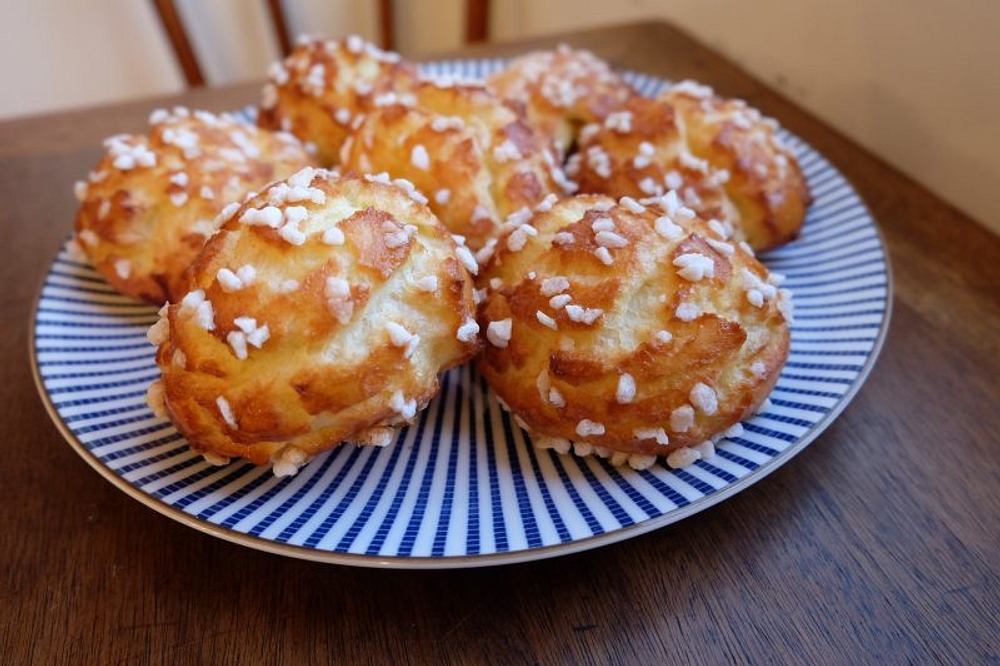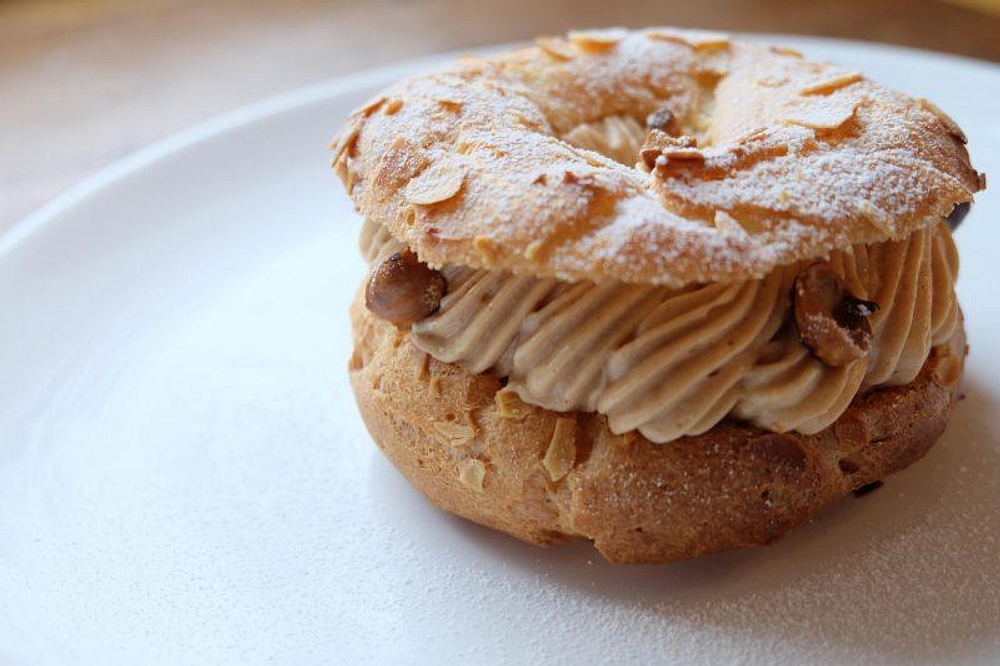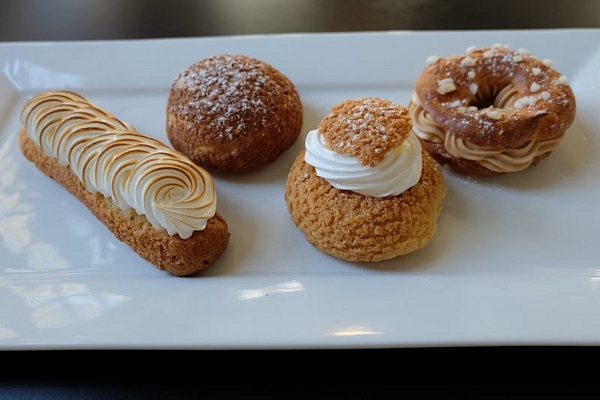Ah, choux… bless you!
If you want hands on help in your home kitchen be sure to check out our online Choux Pastry Video Class!
We’ve all been there. You’ve spent hours in the kitchen, meticulously following a recipe word for word. You’re almost certain everything went perfectly as you put your baking tray in the oven.
Then 30 minutes later, at 180 degrees, it strikes. Disaster. Cracked pastry, the dough didn’t rise, uneven textures. You name it… we’ve seen it.
That’s why we decided to take some of your frequently asked questions and troubleshoot some common problems.
We've also included some extra top tips that should be helpful for all you Choux Pastry bakers out there!
Alternatively, why not learn with a hands-on class here with us in Paris? You can join us for a Choux Pastry adventure all year round. Find out more here.
What can go wrong when baking Choux pastry.
Why didn't my pastry rise or puff up?
Something just doesn't look right... Your choux are as flat and deflated as your hopes of becoming a famous pastry chef, but don't throw in the dish cloth yet! Here are some common reasons why your choux aren’t quite right.
- The oven was opened during the first 20 minutes of baking.
Patience is a virtue! In those moments when you really want to get a closer look at whether your tray of choux pastry is rising or not, resist! As soon as you open the oven door to sneak a peek, all the hot air escapes and the choux can fall flat. Make sure to keep the oven door closed at all times, or at a minimum, during the first 20 minutes of baking. If you REALLY need to check, make it is as quick as possible, and make sure you wait until one batch has finished baking before you open the oven to put another tray in.
- Too many trays in the oven. (You should have a maximum of 2)
Most normal commercial ovens can hold up to three trays, but when baking Choux pastry, you should keep the maximum to two trays. This gives the choux enough space to rise, and not be flattened by having too little space.
- Too much moisture in the dough.
Another reason your eclairs may not have risen is because there is too much moisture in the dough. Once you have melted the butter, remove the pan from heat, add all the flour at once and stir, then place the pan back on the heat and mix quickly until the mixture forms a dry ball that comes away from the pan. Your aim is to dry the dough, and then add the eggs as you go.

Check out these beautiful fluffy Chouquettes - one of our favourite treats!
Why is my Choux pastry cracked?
Sometimes when you bake choux pastry shapes, they shrink in size, and have a dry cracked texture. This happens to the best of us! But to find out why, we suggest the following explanations.
- Air bubbles in the piping bag.
When you are piping out the pastry from your piping bag onto the baking tray, make sure to squeeze out any air bubbles that are trapped in the dough by pushing the dough forward smoothly towards the piping tip.
- Too much moisture in dough from the eggs.
If you’ve used too many eggs in your pastry dough, water in the egg yolk will start to separate from the yolk. Once the pastry is baking in the oven, this water then evaporates, causing the structure of the pastry to tighten up and shrink.
- The dough is too thick to pipe.
In order to make your pastry more malleable and flowy, you can add some more eggs to the pastry batter. This will help to soften the dough and make it easier to pipe. Make sure to keep the consistency in mind when you're stirring the pastry.
- Your dough should be shiny and smooth.
To make sure your dough is just right, scoop up the mixture on a spoon or spatula and then raise the spoon in the air, letting the pastry fall back into the pan. You will know it's ready when the pastry slides off slowly, creating a 'V' like shape.
When the choux pastry is still in the pan, pass the spatula through the dough, separating it from side to side of the pan. You will know it's ready when the pastry has a consistency that slowly closes in on itself once the spoon has passed through.
Your choux ball is ready when you have a skin at the bottom of the pan, which takes about 2-3 minutes on medium heat.

©LaCuisineParis Here is another classic Choux Pastry creation - Paris Brest!
How should I store my choux after they are cooked?
If you aren’t going to eat them straight out of the oven, it's best to store your Choux pastry in the following conditions:
- You can store unfilled choux in the freezer, in an airtight container.
- You can store filled choux in the fridge (although it is best to fill them last minute)
- You can even pipe the dough into half-sphere silicon molds, freeze them, then pop them into bags. You can defrost them in the refrigerator, and make just 1 choux at a time
Bonus Tips:
- During the last 5 minutes of baking time, stick the handle of a wooden spoon into the oven door, to leave it slightly ajar. This will let the steam escape. Turn the oven off when the baking time is done, and leave the choux in the oven, (with the spoon still holding the door open) for an additional 5 minutes.
There are also many different variations of choux pastry, so if the choux fits… eat it.
Variations
- Try piping different shapes- you can do small dots to form a ring or a line. There are also perforated molds that will help you achieve hearts and rectangles! Perfect for holiday themes.
- You can have Savoury choux pastry as well. Try adding cheese to form gougères, which will impress your friends on picnics or Apéros.
- You can change the flavours of your choux by adding un-sweetened cocoa powder to dough before baking ( Just make sure to never add liquid flavourings, as they will alter the dough and make it too wet)
- To top off your Eclairs, add a few crushed hazelnuts to the top of the dough before baking!

